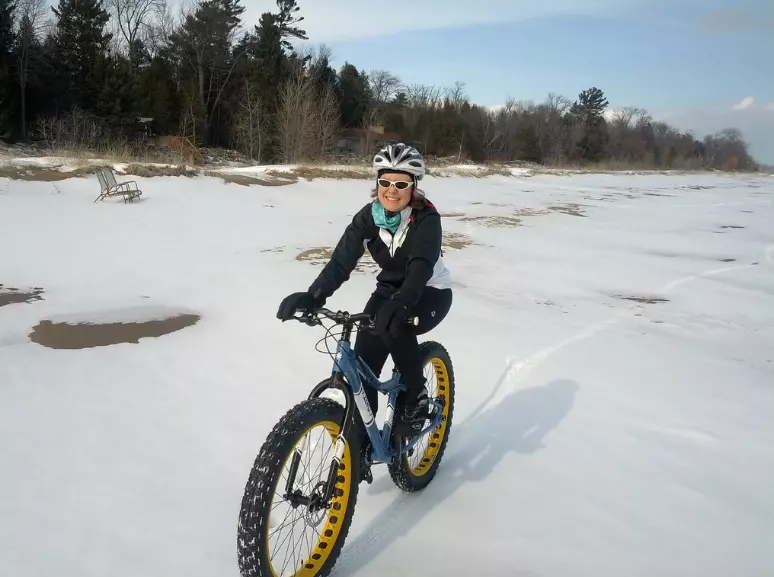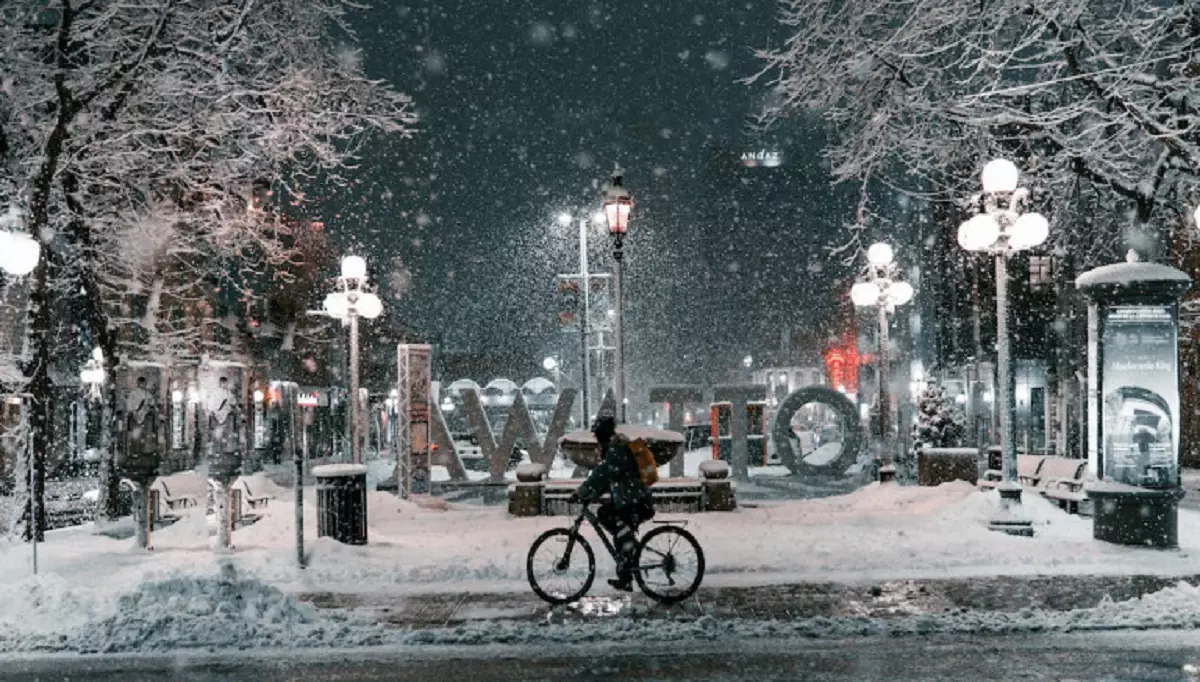Throughout this winter – just as any previous – many cyclists hang up their helmets, stashing bikes away until warmer days come back. However, for the dedicated and adventurous, this season is an opportunity to get a unique cycling experience. Winter cycling offers serene and picturesque landscapes, but it comes with its own set of challenges.
Proper winter gear
Before venturing into the winter wonderland on two wheels, it’s crucial to gear up appropriately. Investing in the right equipment can make all the difference in ensuring a safe and enjoyable ride.
Dressing in layers is the first thing you should consider. Start with a moisture-wicking base layer to deal with the issue of sweat, add an insulating layer for warmth, and finish with a waterproof and windproof outer layer. Don’t forget thermal gloves, a snug-fitting hat, and, of course, thermal socks.
Another thing to keep in mind is that with daylight dwindling, visibility becomes your priority. Equip the bike with front and rear lights, and consider adding reflective tape to your clothing and accessories. A high-visibility vest or jacket can be of help.
Additional tips:
- Opt for winter-specific or studded tires to improve traction on icy or snowy surfaces. Lowering tire pressure slightly can also enhance grip.
- Fenders help prevent slush and mud from splattering onto you and your bike, keeping you dry and maintaining visibility.
Bike maintenance
Winter conditions can be harsh on your bike, so regular maintenance is essential to keep it in top shape. The weather is likely to be cold, thus it can affect brake performance. To lower its impact on your cycling plans, inspect and adjust the brakes to ensure they respond reliably. Consider upgrading to disc brakes for enhanced stopping power.
Also, salt and road debris can be corrosive to your bike. Thus you’ll have to regularly clean and lubricate the drivetrain, including the chain, to prevent rust and ensure smooth operation.
Additional tips:
- Regularly check and tighten all bolts to prevent any parts from coming loose during your ride.
- Ensure that your bike lights are in good working order. Replace batteries or at least charge them regularly.
Plan your route carefully
Winter conditions can transform familiar roads and trails into a challenge. Strategic route planning is crucial for a safe and fun winter cycling. Stick to well-traveled areas and avoid shortcuts through less-traveled places, as they may be treacherous.

You’ll have to be extra cautious of shaded areas and spots where melted snow refreezes into ice. Approach such surfaces slowly and be prepared to dismount and just walk for a while. To be absolutely sure, don’t shy away from simply listening to the weather forecast. Sudden snowfall or freezing rain can be very disruptive, if not harmful. So you better plan your rides for periods of milder weather whenever possible.
Winter riding tips
Cycling in winter demands a different set of skills and techniques to navigate through challenging conditions safely. Winter roads can be slippery, and visibility may be limited. Start with reducing your speed – you’ll have more time to react to unexpected obstacles.
In winter, brake gently and avoid sudden stops. If you have disc brakes, they may perform better in wet and icy conditions than traditional rim brakes. Or just choose the smoothest line of travel to avoid patches of ice and snow and be mindful of road markings, as they may indicate areas with better traction.
Winter safety measures
In addition to season-specific gear, maintenance, route planning, and riding techniques, there are certain personal safety measures that can further enhance your winter cycling experience:
- Tell a friend or family members about your intended route and estimated time of return. In case of an emergency, someone will be aware of your whereabouts.
- Fully charged your phone before setting out on a ride. It is a vital tool for navigation, communication, and calling for help if needed.
- Carry a small kit with essentials such as a multi-tool, spare tubes, a pump, and basic first aid supplies. Being self-sufficient is always smart, especially in remote areas.
- If conditions become obviously hazardous or if you’re feeling tired, turn back. Safety should always be the top priority.
Conclusion
Winter cycling may present its own set of challenges, but with the right gear, proper maintenance, strategic route planning, and enhanced riding techniques, it can be a rewarding and invigorating experience. Remember: nothing adds more joy to the fun of cycling than a safe return at the end of your adventure. By taking the necessary precautions, you can turn winter into a one more cycling season.
Note that Central Park bike rental lets you enjoy city bike rides at any time of the year without even purchasing your own vehicle. This is a good option for people who only like to cycle occasionally.
